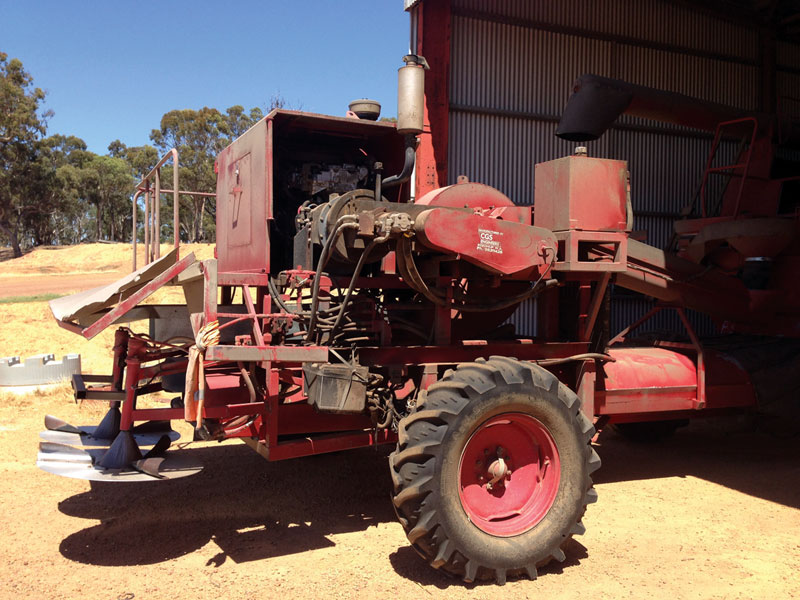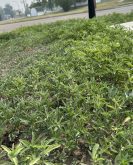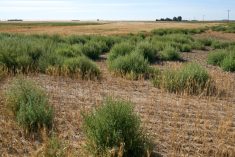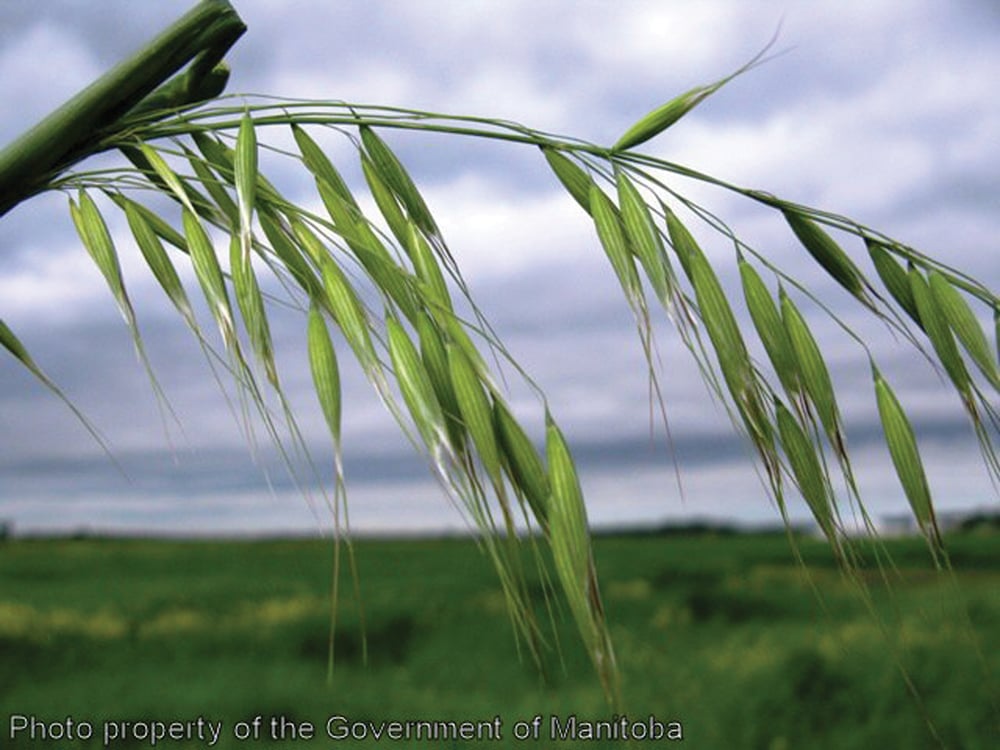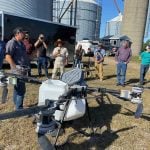A presentation on a “seed destructor” — an Aussie contraption for battling resistant weeds — caught the attention of a lot of FarmTech attendees earlier this winter.
But the price tag of nearly $240,000 and having to pull the hefty machine behind a combine quickly cooled their interest.
However, a complete redesign of the Harrington Seed Destructor has cut its price tag in half — at no cost to its efficacy, says Three Hills agronomist Steve Larocque.
“It still does the same job,” said Larocque, who headed Down Under after FarmTech and met with Ray Harrington on his farm in Western Australia.
Read Also
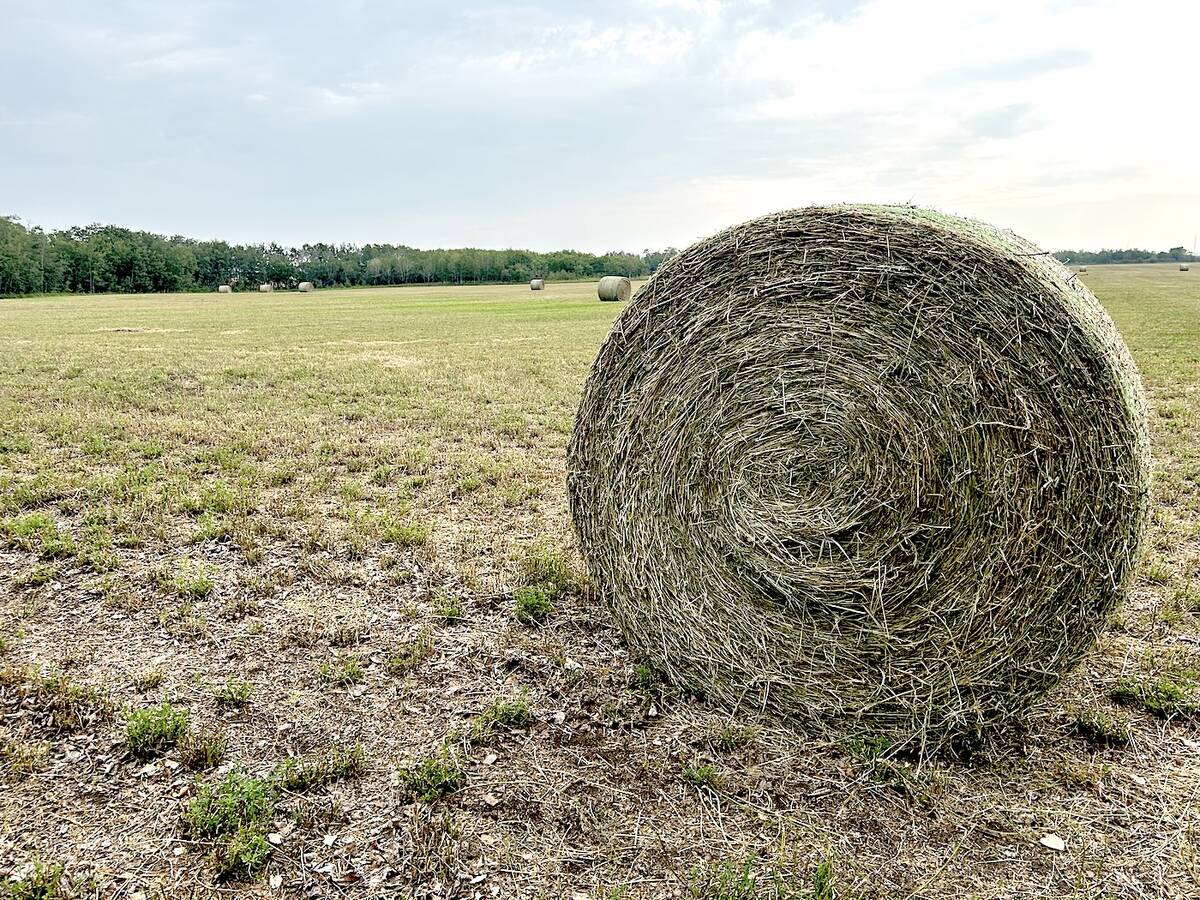
Alberta has adequate feed supplies going into winter
Hay yields across Alberta were varied, but one expert says feed supplies are in strong supply for Alberta producers for the upcoming winter.
“In order to reduce your weed seed bank and keep ahead of it, you need to have at least 83 per cent control. Even with the new design, it’s destroying 98 per cent.”
The original creation was a stand-alone machine pulled behind a combine. But even though Aussie farmers have massive problems with resistant ryegrass, they weren’t any more thrilled with the price than FarmTech attendees. Just four units have been sold since it was commercialized in 2012.
The new version “fits really neatly between the sieves and the chopper,” said Larocque, who called the old design “overkill.”
“You don’t necessarily have to pulverize the seed into oblivion,” he said. “What you need to do is knock the seeds around enough so you
Right now, the system has been designed to run with a CASE Class IX combine, as the revamped seed destructor requires 76 horsepower to run. Adjusting it to work with other machines is something Harrington hopes to address in
future designs.
“(The Harrington seed destructor) was 18 years in the making, but this particular model is in its infancy,” said Larocque. “With just a few tweaks, he’ll have it up and running.”
In fact, it’s so new that Harrington wouldn’t let Larocque take pictures as there are still patents pending.
From the Grainews website: Australia tackles herbicide resistance
Weed seed management
Producers were introduced to harvest weed seed management practices at FarmTech in late January.
“When we used (harvest weed seed control) systems at harvest, on average we got a 57 per cent reduction in ryegrass emergence in the following season,” said Michael Walsh, an associate professor at the University of Western Australia.
Up to 90 per cent of a weed’s seed production can be collected by a combine during harvest, said Walsh, but most combines simply separate the weed seeds from the crop and then spit them out with the chaff, spreading and reseeding the weed seeds across the field.
“We’re subsequently rewarding the survivors by planting their seeds again for them,” he said.
Chaff carts can collect up to 85 per cent of the weed seed that’s harvested, but logistically, “it’s quite difficult to collect off the field and move to another location (for use as feed),” he said. Moreover, reduced numbers of livestock have diminished the market for chaff as feed.
Most producers in Australia burn their chaff instead — a practice that’s illegal on most Alberta farms without a permit.
“Burning is very efficient at killing weed seeds,” Walsh said. “If you get that burn hot enough for long enough, you will kill pretty much all the weed seeds that are present.”
But with burning — and cultivation — off the table for many Canadian producers, would the new and cheaper Harrington Seed Destructor be an option?
Probably not, says Larocque.
“To go out and spend $120,000 on top of your $450,000 combine, you’d better have some serious weed issues to justify the cost.”
However, Larocque expects to see the machine show up south of the border where producers are “losing entire fields” to herbicide-resistant weeds in the Cotton and Corn Belt.
“They’ve got some serious issues down there, and we’re not far off,” said Larocque.
“We’ve got 30-some-odd per cent of Canada itself has herbicide-resistant weeds. It’s just a matter of time before it’s our turn.”

